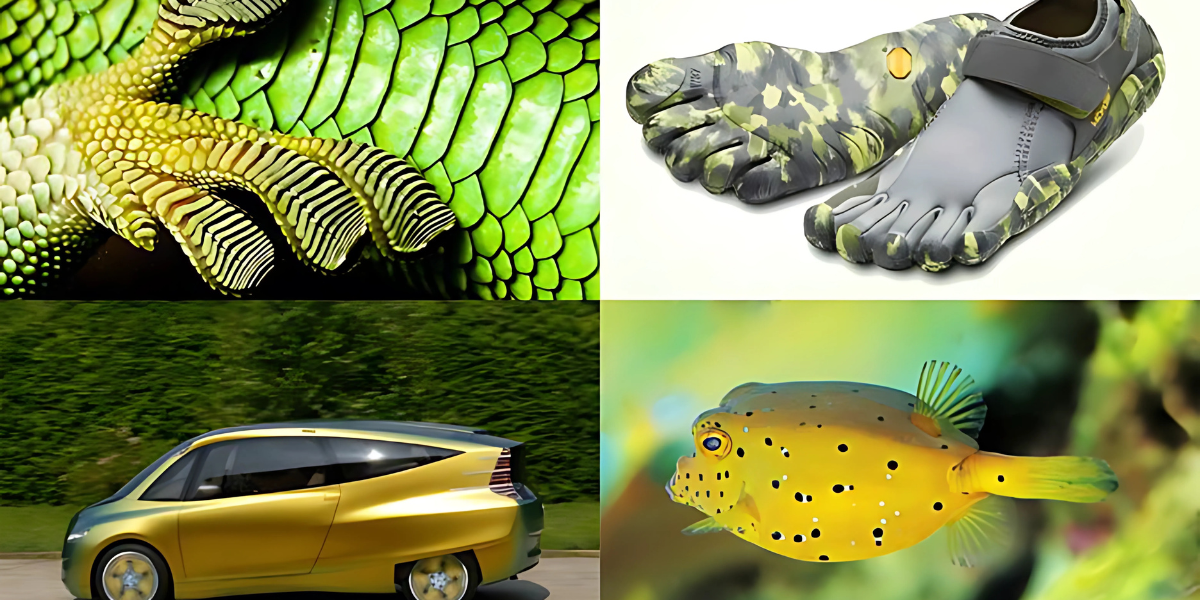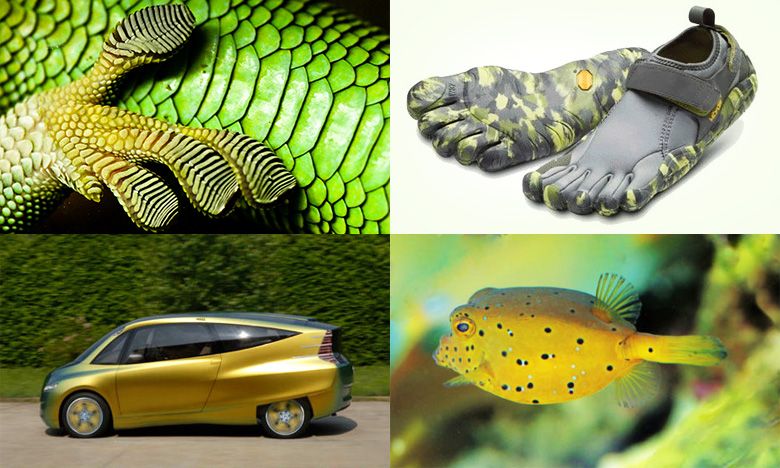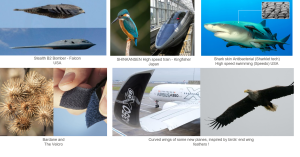
Imagine, if you will, a smartphone that never shatters, an airplane that repairs its own wings, or a car that buffs out its own scratches without intervention. It's not the musings of a science fiction aficionado, but a tangible future for product design, a future driven by the unlikely inspiration of starfish, lizards, and other wonders of the natural world.
This is the exciting frontier of biomimicry: design that looks to nature for inspiration, a concept that has started to shake the pillars of traditional product design.
How many of us have had our hearts sink as we watched our smartphone plummet towards the pavement? Or winced at the sight of a scratch on our car's pristine surface? What if these things could repair themselves? What if our belongings could heal, just like our skin knits itself back together after a cut, or a starfish regrows its severed limb? No more expensive repair costs, no more premature obsolescence.
It's time to turn the design world inside out, and biomimicry, with self-healing materials at its helm, is the tool to do it.
Self-healing materials, though still relatively niche, are already showing their potential. Remember the satellite launched last year with a polymer skin that could repair micrometeorite damage? Or the recent demo of a prototype smartphone screen that recovers from cracks within hours? These are early examples of an impending product design revolution.
The idea itself isn't new. Nature has been perfecting the art of self-healing for millennia. Trees encapsulate damaging insects in resin, starfish regenerate lost arms, and lizards regrow severed tails. These abilities are not science fiction; they are science fact. So why not apply this inherent wisdom of nature to product design?

We often call our era "The Anthropocene," highlighting how humans have become the primary influence on the environment. Yet, isn't it ironic that in designing the objects that define our age, we often ignore the lessons of 3.8 billion years of evolution? Isn't it time we looked back at nature, not just as a resource to exploit but as a teacher with incomparable experience?
Self-healing materials inspired by nature could revolutionise not just the longevity of products but also their sustainability. Less waste from broken goods. Less need for precious resources. Less energy spent on creating replacements. The future of product design could help heal our planet, too.
But how far can we take this concept? Can we create buildings that heal their own structural weaknesses? Roads that fix their own potholes? Bridges that detect and mend their own stress fractures?
The future is as vast as our imagination and as limitless as nature itself. Every leaf, every creature, every rock, and river could hold the blueprint for a new era of product design. And if we think beyond our immediate surroundings, what might we learn from the tardigrade’s resilience or the intricate architecture of a coral reef?
We must not only question our assumptions about product lifespan and durability, but also consider the broader implications of this shift. What happens to the industries built around repair and maintenance? How do we navigate the balance between growth and sustainability in an economic system that prizes constant consumption?
And, importantly, we must question what other ideas we have missed by not looking closely enough at the world around us.

There is a whole untapped world of inspiration out there, whispering its secrets to those who are willing to listen. Designers, it's time to become those listeners. It's time to take our sketchbooks and 3D models and head into the forests, the oceans, and the skies. It's time to study the meticulous patterns of a butterfly's wings, the unyielding strength of a spider's web, and the insulating capabilities of a polar bear's fur.
Nature, in its boundless wisdom, is the blueprint for sustainability, efficiency, and innovation. Embracing biomimicry in design isn't just about pushing boundaries—it's about dismantling the very concept of boundaries. It's about redefining our relationship with the world around us, creating a new understanding where nature is not our dominion but our guide.
Fuelled by advancements in materials science and synthetic biology, the field of self-healing materials is ripe for exploration and ripe for a paradigm shift. The design industry, synonymous with innovation and foresight, must take the lead. We need to seed this new vision in every studio, every workshop, every maker-space across the globe.
Our challenges are many, but they're surmountable. As we evolve our perspective, our designs will evolve too. Products will become partners, not possessions. They will be companions that adapt, heal, and grow alongside us—just as nature intended.
Self-healing materials are just the beginning. A decade from now, we might see a skyscraper that breathes, absorbing CO2 during the day and releasing oxygen at night, inspired by the photosynthetic process in plants. Or vehicles that change their shape according to the road and weather conditions, much like certain animals adapt to their environments.
But to get there, we must start now. We must infuse our designs with empathy for nature, not just utility for humans. We must look at nature's solutions, not as anomalies but as the ultimate design principles.
Designers are storytellers, dreamers, inventors. We shape the narrative of the human experience. It's time we use our power and our platforms to set a new course. Let's tell a story of a future where design and nature are intertwined, a world where products are not only inspired by nature but are an extension of it.
Our exploration into self-healing materials, inspired by the natural world, is not just an exploration into product longevity—it's an exploration into our own longevity on this planet. Let's make the design world the herald of a new era, an era of understanding, respect, and emulation of the beautiful complexity that nature has to offer.
In nature's grand design, everything serves a purpose, everything has its place, and nothing is wasted. This wisdom of nature can guide us in creating a future of design that is not just functional and aesthetic, but also sustainable and resilient.
Nature has had billions of years of R&D, and it’s time we take note. After all, the future of design doesn't just lie in the technology we develop, but in the lessons we learn from the world around us.
So, designers, let's embrace nature's wisdom, let's harness the power of self-healing, and let's create products that don't just serve us but also serve the world. Because the future of design is here, and it's not just healing—it's truly revolutionary.